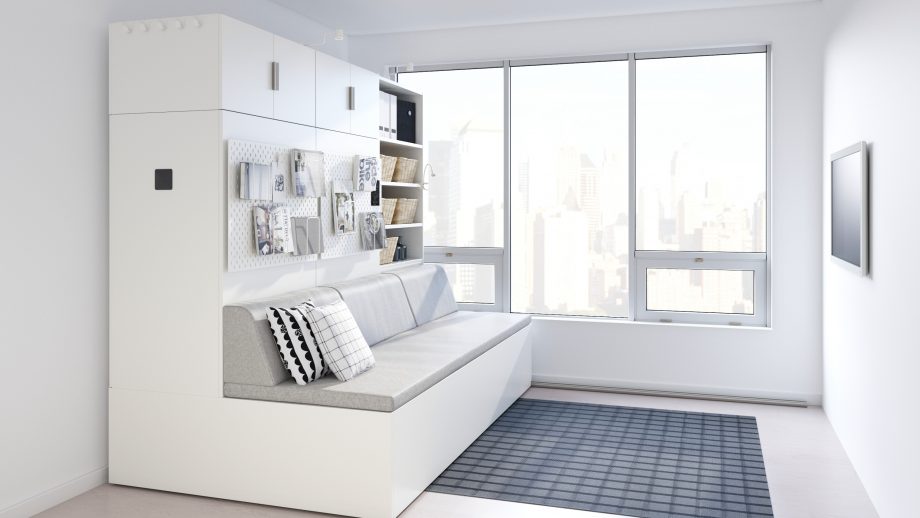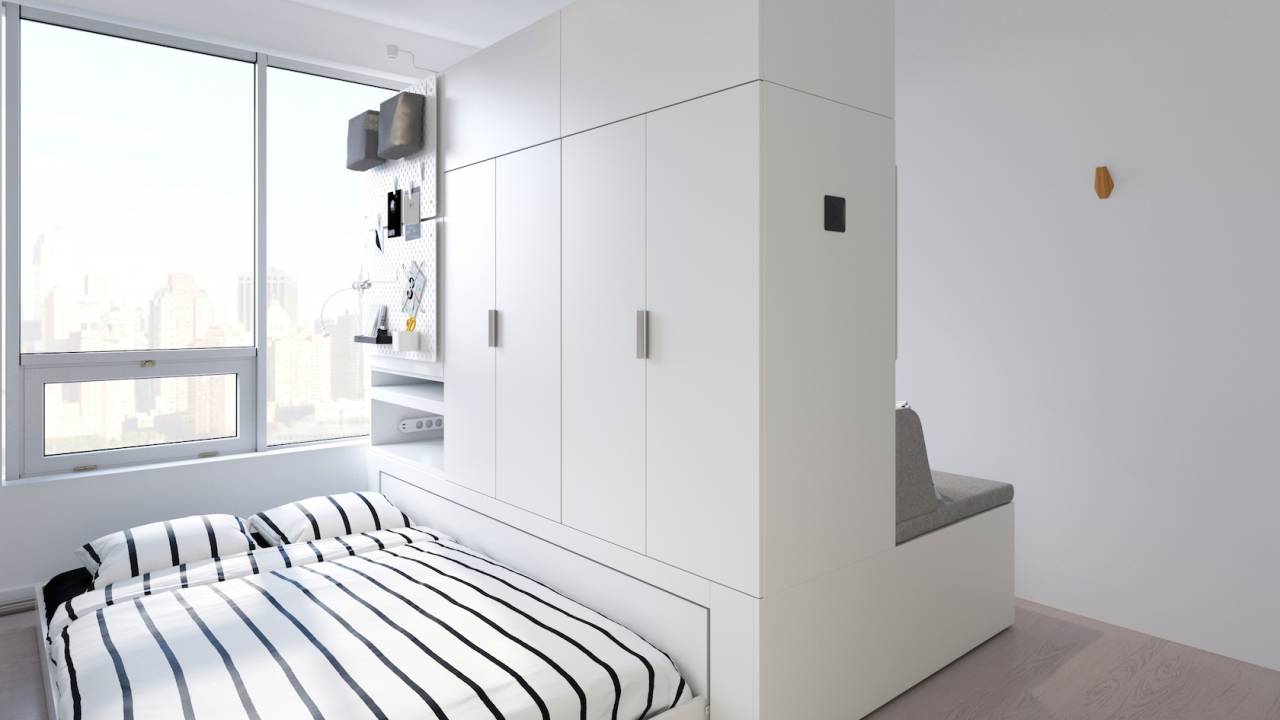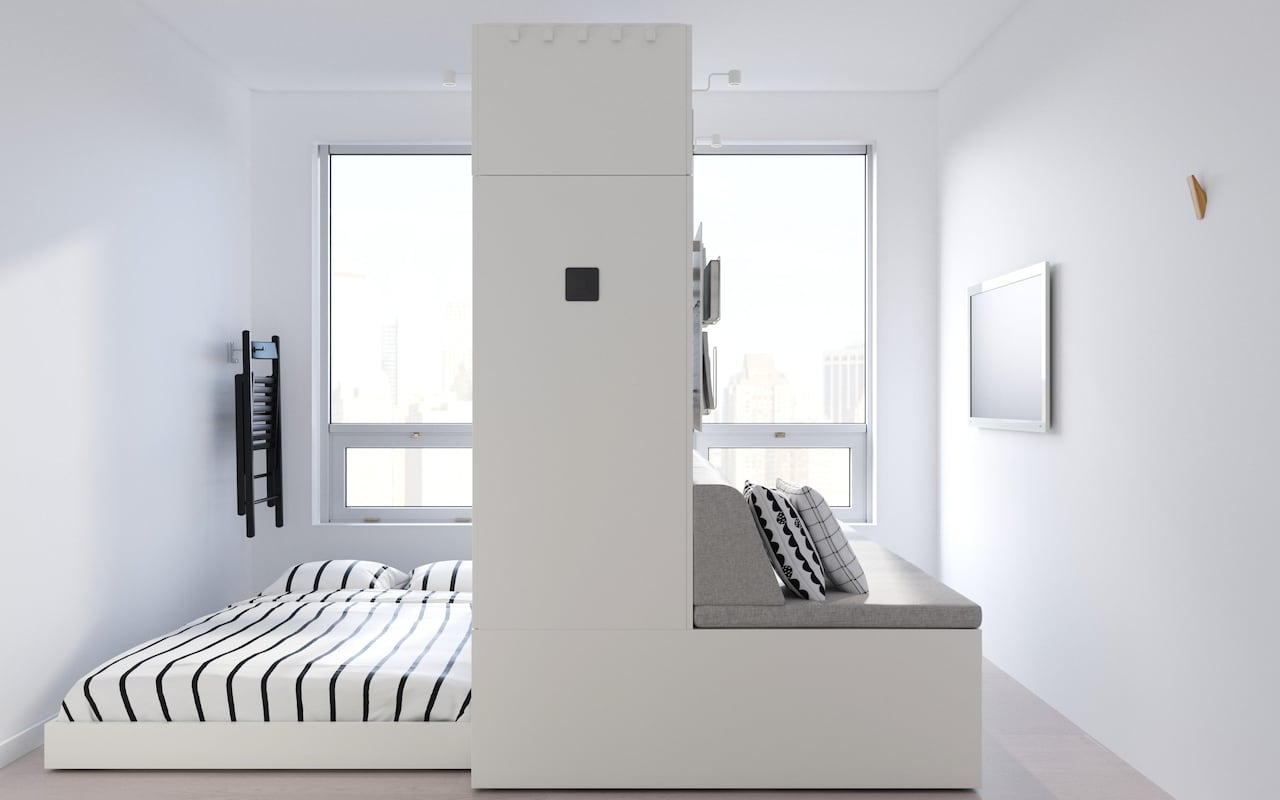Swedish home furnishings manufacturer Ikea is understandably proud of its tiny home designs, which can be found in demo form in most of its retail stores, where designers have crammed a bed, a sofa, a television, and a tiny kitchen into spaces as small as 250 square feet. Now, the company intends to augment that concept considerably by adding a line of robotic furniture that can convert from a storage and sofa area into a bed and wardrobe with the swipe of a finger across a touchpad or by voice command using a smart speaker.
The new line of products, based on Ikea’s partnership with Boston-based tech startup Ori, is called Rognan. According to the company, the product is designed to transform small spaces into comfortable, multifunctional homes, although we’re getting more of a vibe of Korben Dallas’ shoebox home in The Fifth Element than some futuristic habitat with Tony Stark’s Jarvis on board.
Ori’s robotic platform is already compatible with Ikea’s Platsa line of furniture, as well as the company’s Tradfri line of cabinet and wardrobe smart lighting. We’re basically talking a bout a large, transformable storage unit that can be activated by touchpad or a smart speaker to slide across a room to divide it into two living spaces. The unit also contains a bed, desk and a pullout couch. Ikea claims that the technology embedded into the Rognan line of furniture can save up to 80-plus square feet (8 square meters for you EU lot) of living space.
“Instead of making the furniture smaller, we transform the furniture to the function you need at that time,” said Seana Strawn, Ikea product developer, in a release. “When you sleep, you do not need your sofa. When you use your wardrobe, you do not need your bed.”
So when and where will this new robotic gizmo be available? Ikea says the Rognan line will launch in late 2020, with the first target markets being the super-dense communities found in Hong Kong and Japan. A worldwide rollout will presumably follow in the coming years.
While the inclusion of Ori’s robotic technology is probably the most robust rollout from the Swedish furniture giant in this market, it’s far from the company’s only experiment with transforming tiny living spaces. Ikea is also working with BumblebeeSpaces, an American startup that uses the ceiling to store furniture. The company is also drifting into the smart home market with a new smart speaker dubbed Symfonisk that was developed in conjunction with Sonos. It’s coming to Ikea’s Home Smart brand this August.
Other innovations recently announced at Ikea’s Democratic Design Days event include a project to use ocean plastic in new products, an initiative to use new materials to reduce air pollution, and a Thailand-based partnership to create new products based on reducing and repurposing materials that have already been created.





